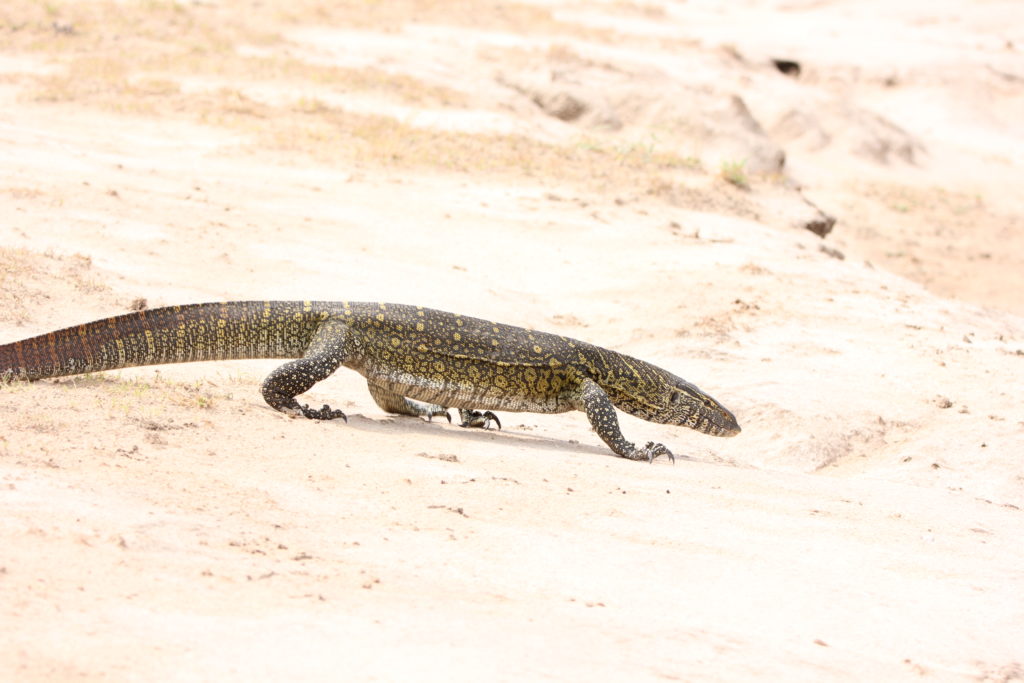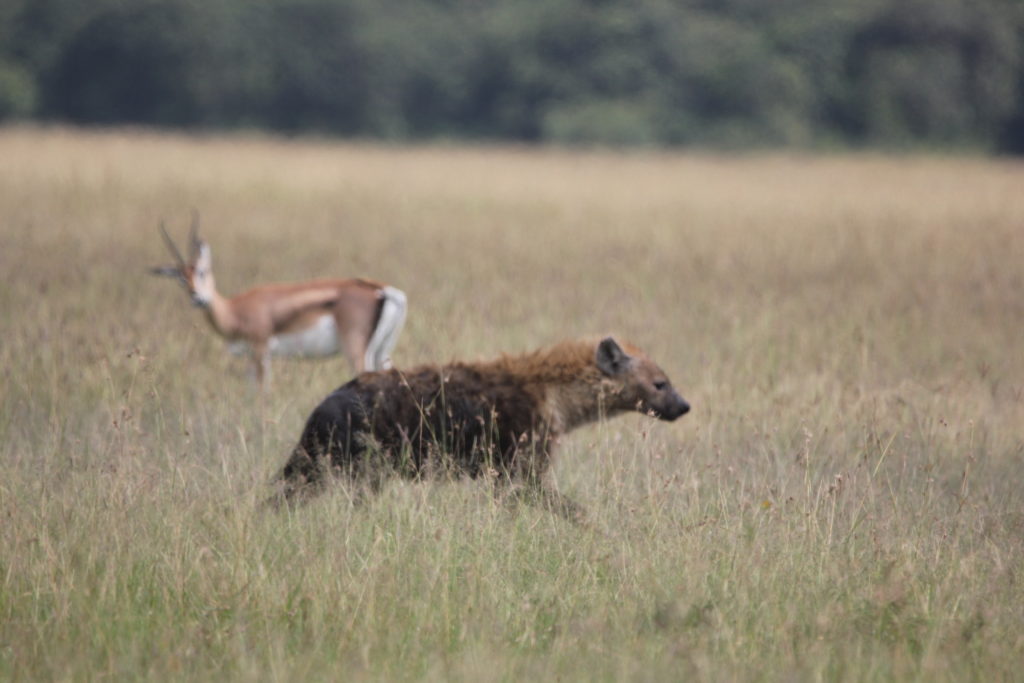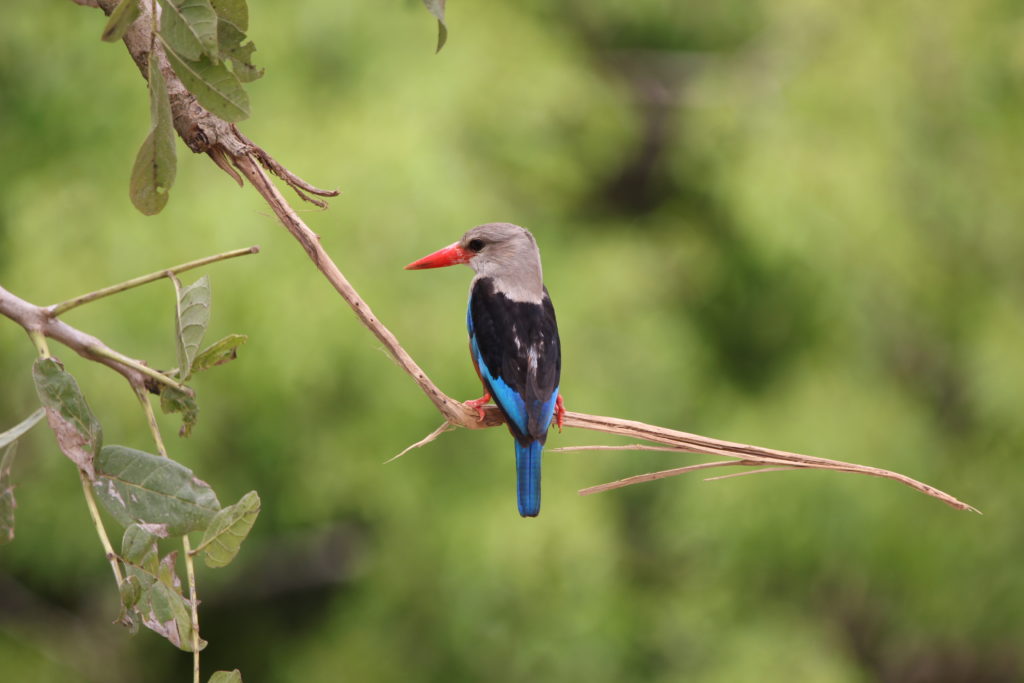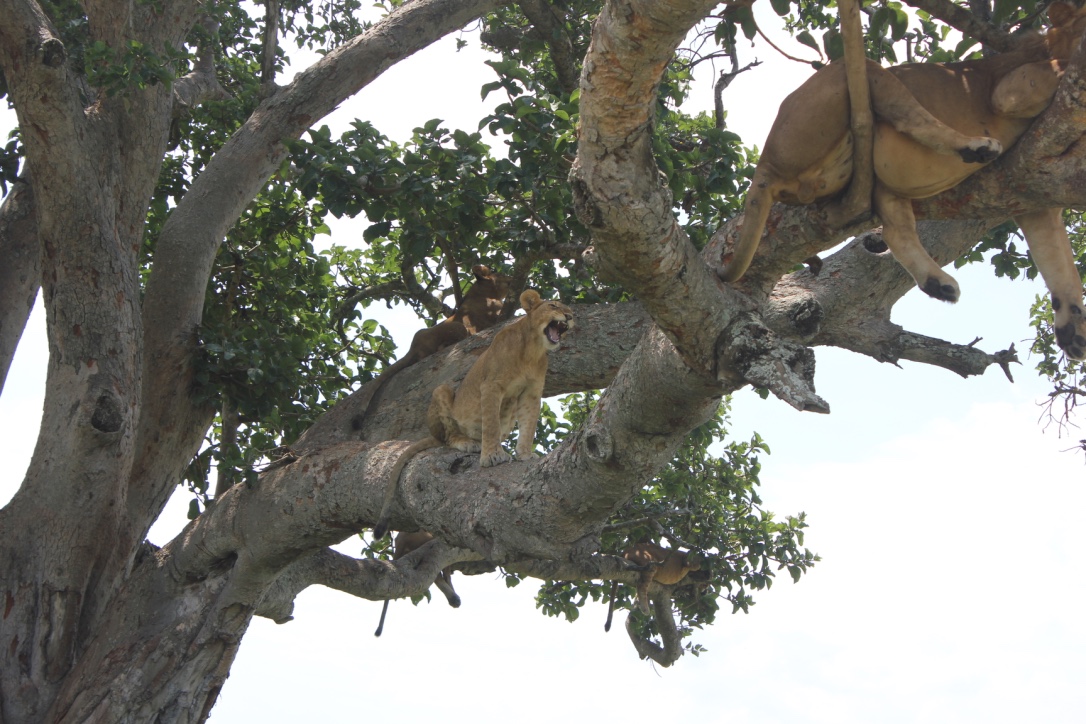
Queen Elizabeth National Park is a gem of all sorts! Located in western Uganda, it represents a unique diversity of fauna and flora. The Park shines with an array of wildlife that is pocketed within different ecosystems and landscapes. The topography and vegetation of the area vibrate with a rhythm of nature and a feel of an African wilderness, thanks to the diversity and wildlife in Queen Elizabeth National Park.
Vegetation of Queen Elizabeth National Park.
Themeda trianda is the most widespread species of grass though it is non-existent in water logged areas. Other species of grass to come along include: Cymbopogon afronardus, acacia hockii, sporobulus pyramidalis, acacia gerradii, euphobia candelabrum (E.dawai trees) and thickets of Capparis tomentosa. The predominant tree species include: acacia sieberiana, acacia gerradii, ficus ficus, and ficus gnaphalocarpa.

Part of the park is decorated with forested areas. Maramagambo forest is the largest of the forests in the queen and contains Uganda ironwood, the cynomtra alexander, pterygota, pseudospondius and treculia. The forest is home to 7 primate species that include the chimpanzees, L’Hoest’s Monkeys, Black and White Colobus Monkeys, Red Tailed Monkeys, Blue Monkeys, Vervet Monkeys and Baboons. The forest further holds a great number of birds and extended columns of soldier ants in addition to the bat caves.
Soil of Queen Elizabeth.
The soils of the park are alluvial, sedimentary or volcanic in origin. Two types of soil dominate portions of the southern sector of the area as well as the Mweya area. North of katwe lies soils of kyamatoma catena which are characterized by shallow black clay loams. Ishasha soils are sandy loams and sandy clay loams.
Reptiles and amphibians known to occur as part of the wildlife in Queen Elizabeth National Park.

Soft shelled turtle, Western hinged tortoise, Monitor lizard, Blue-bodied agama, Red and black skink, Side-striped skink, Speckled-lipped skink, Grey-black limbless skink, Uganda house gecko, Black-throated Dwarf Gecko, Common house lizard, Snake lizard, Three-horned chameleon, Lesser chameleon, Bright green chameleon smaller chameleon, Pigmy chameleon, Worm snake, Python, Pudd adder, Gaboon viper, Rhinoceros horned viper, Black-lipped cobra, Black-necked or spitting cobra, Fold’s forest cobra, Forest mamba, Boomslang or tree snake, Sun snake, Vine or twig snake, Burrowing snake, File snake, Slender green snake, Night adder, Velvety-green night adder, Western carter snake, House snake, Wolf snake, Marsh snake, White lipped snake, African tod, Bull frog, Clawed frog or plathander, Sharp-nosed frog, Tree frog.
Checklist of mammals known to occur in the park.
Queen Elizabeth national park hosts over 95 mammals. These include the following:

Spotted hyaena, Hedge hogs, East African hedge hog, Shrews, Peter’s shrew, Fruit bats, Epauletted fruit bat, Rousette fruit bat, Insect eating bats, White-bellied tomb bat, Yellow-winged bat, Monkeys and baboons, Vervet monkey, Uganda blue monkey, Red-tailed monkey. Olive baboon, Black and white colobus, Red colobus, Apes, Long-haired chimpanzee, Pangolins, Temminck’s lesser, Ground pangolin. These animals form part of the highlights of wildlife in Queen Elizabeth National Park.
Dogs
Side-stripped jackal, East African wild dog, Weasels, badgers and otters, African stripped weasel, Zorilla (east African polecat,) Ratel (honey badger,) Viverrines, African civet, Bush genet, African palm civet, Greater grey mongoose, Lesser slender mongoose, White-tailed mongoose, Banded mongoose, Marsh mongoose.
Cats.
African wild cat, Serval, Lion, Leopard, Aard-varks, African ant bear or aard-vark.
Hyraxes.
Rock hyrax, Tree hyrax, Elephants, African elephant, Hippopotamuses, Common hippopotamus
Pigs and hogs.
African bush pig, Giant forest hog, Wart-hog
Bovines.
Uganda black buffalo, Common (or kavirondo,) Bush buck, Speke’s sitatunga, Bush duiker, Blue duiker, Red duiker, Yellow-backed duiker, Defassa waterbuck, Uganda kob, Bohor reedbuck, Topi, Hares and rabbits, East African hare, Porcupines, East African crested porcupine, Cane rats, Langer cane rat, Squirrels, African tree squirrel, Giant squirrel.
Rats and mice.
Striped grass mouse, Harsh furred rat, Unstriped grass mouse, Common swamp rat, Pouched mouse.
All the above mammals move freely within the extensive 1,978 km² Queen Elizabeth National Park wildland.
Fish occurring in the park.
Tilapia nilotica, Clarias lazera, Bagrus docmac, Protopterus aethiopicus, Mormyrus cascive.
Early paleolithic tools from the park.
Hand axe, Cleaver, Reconstructed bolas, Ishango harpoon, Bored stone, Scraper, Lunate, Transverse arrow head, Potsherd.
Best time to visit the park.
The climate of the area is conducive. Since Queen Elizabeth National Park is located in proximity to the equator, it experiences two rainy seasons and uniformly warm temperatures throughout the year. The park is usually wet during March to May and September to December during the rainy season. During this time, the park’s environment is usually beautiful and offers chances of watching migratory birds. However, the best time to visit the park is during the dry season that happens between December to February and June to September.

The activities to do in this park include; Bird Watching, Cultural/Community Experiences, Chimpanzee Tracking in the Kyambura Gorge, Game Drives, Boat Safaris on Kazinga Channel, Lion Experiential Tourism, Nature and Forest Walks. On safari, you will be able to see most of the diversity and wildlife in Queen Elizabeth National Park.

